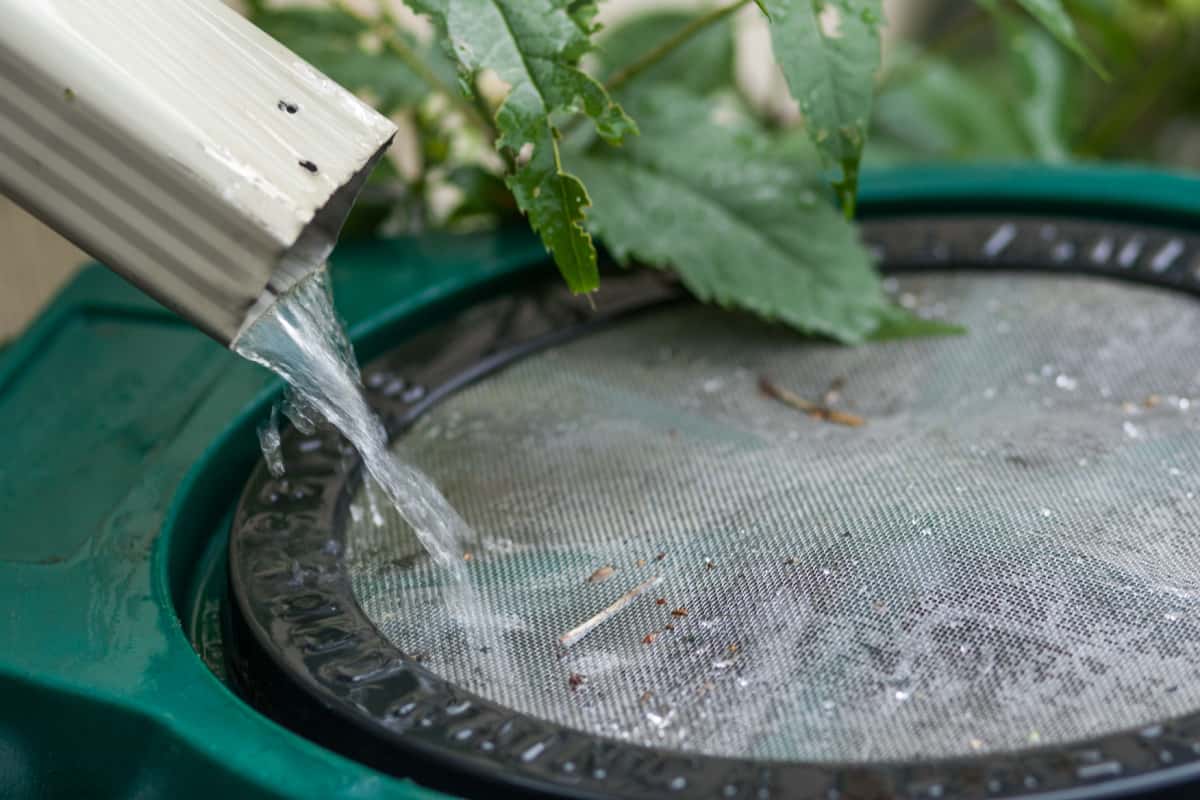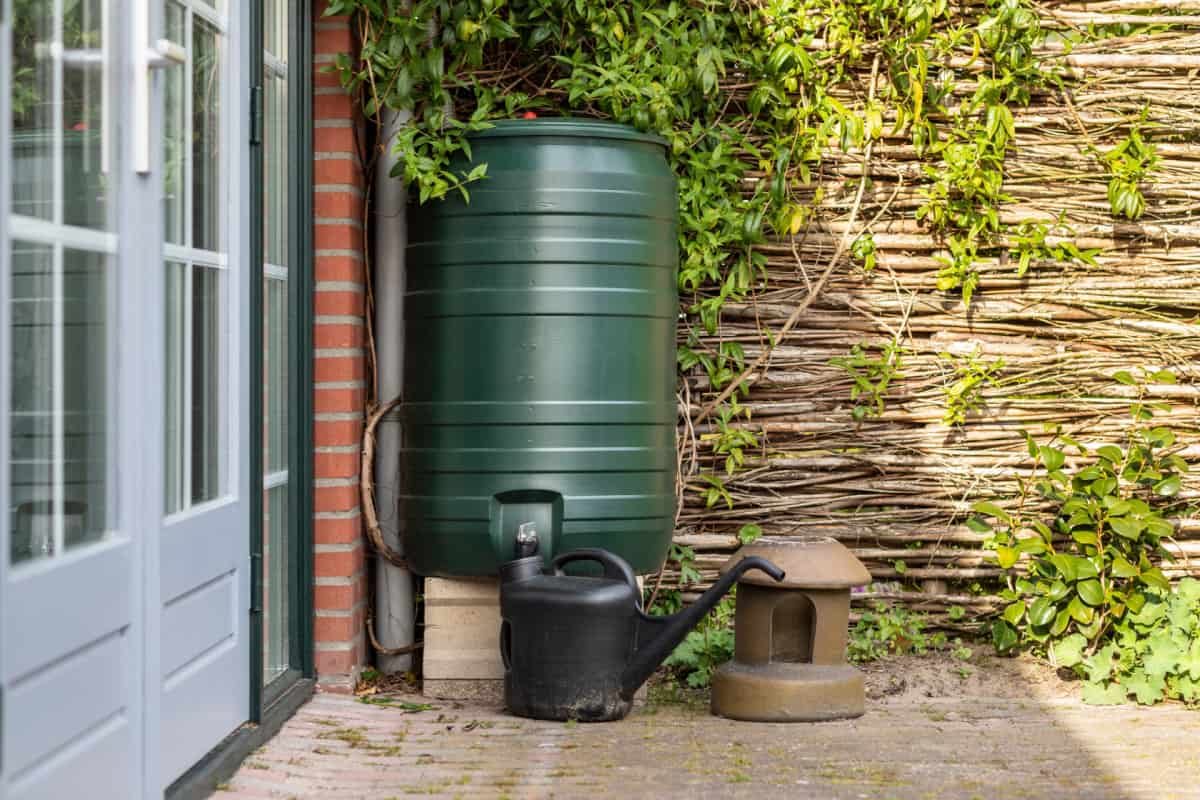One effective method to conserve water and benefit our gardens is the use of rain barrels. In this article, we will discuss some of the main benefits of having rain barrels in our gardens.
Firstly, rain barrels not only help save money on water bills, but it also ensures that you have a more sustainable, environmentally-friendly water source for plants.
Rainwater is naturally free of chemicals and minerals, providing a healthier and more nourishing option for garden plants, ultimately leading to more vibrant growth and production.
Another significant advantage of installing rain barrels in gardens is the prevention of water runoff. Excess water running off rooftops and driveways can lead to soil erosion and carry pollutants into local water sources.
By collecting this runoff in rain barrels, you can lessen these negative effects on the environment while putting the water to good use in gardens.

Benefits of Rain Barrels
We often overlook the importance of conserving water, but using rain barrels offers a myriad of benefits for gardens and the environment.
Water Conservation
By collecting rainwater in barrels, you can reduce dependence on municipal water supplies. Rain barrels capture water that would otherwise flow into storm drains, allowing you to recycle and use this valuable resource.
Saving on Water Bills
Water bills can be a significant expense for homeowners, especially during hot and dry periods when lawns and gardens require more watering.
By using rain barrels, you can save money by reducing reliance on tap water for outdoor use. According to the Environmental Protection Agency (EPA), using stored rainwater can save up to 1,300 gallons of water during the peak summer months.
Reducing Runoff and Erosion
When it rains, the water that flows off rooftops and driveways can carry pollutants, such as fertilizers, pesticides, and other chemicals, into the waterways.
By collecting rainwater in barrels, you can minimize runoff and prevent these pollutants from contaminating rivers, lakes, and streams.
Moreover, reducing runoff helps to limit soil erosion, protecting landscaping, and maintaining the integrity of local ecosystems.
Promoting Healthy Plant Growth
Plants prefer rainwater over tap water because it is naturally oxygenated, free of salts, and contains essential nutrients. By using rain barrels to water gardens, you provide plants with a healthier and more sustainable water source.
This contributes to stronger and more vibrant plant growth, making gardens even more beautiful and productive.
Choosing the Right Rain Barrel

Rain barrels are a great addition to any garden, but choosing the right one for your needs takes careful consideration.
We'll guide you through the essential factors to focus on: size and material, design and aesthetics, and overflow and spigot options.
Size and Material
First, let's examine the size and material choices for rain barrels. The size of the rain barrel should be selected based on your garden's watering requirements and available space.
A quick calculation can be done by multiplying the square footage of your garden by 0.62 gallons - this will give you an approximation of the water needed for a 1-inch rainfall event.
Common rain barrel materials include plastic, wood, and metal. Each material has its pros and cons:
- Plastic: Lightweight, durable, and affordable. Can be prone to discoloration and cracking over time.
- Wood: Visually appealing, but harder to clean and maintain. Also, tends to be more expensive than plastic or metal.
- Metal: Highly durable, but heavy and can be prone to rust. It may also be more expensive than plastic options.
You can see this 50-gallon rain barrel on Amazon.
Design and Aesthetics
With size and material settled, let's consider design and aesthetics. After all, you probably want your rain barrel to blend seamlessly with the garden environment.
Rain barrels come in various shapes, colors, and designs, so there's bound to be an option that suits your style. Some even come disguised as planters or decorative garden objects.
It's essential to evaluate the overall functionality alongside personal aesthetic preferences, as both play a role in the rain barrel's overall appeal.
Overflow and Spigot Options
Lastly, it's crucial to examine overflow and spigot options. A well-designed overflow system is essential to prevent excess water from damaging the barrel and causing erosion around its foundation.
Look for barrels with overflow ports, overflow diverters, or built-in linking features that allow connecting multiple barrels together. As for spigots, it's beneficial to choose a rain barrel with a metal spigot that offers better durability than a plastic one.
By considering these factors - size and material, design and aesthetics, and overflow and spigot options - you can ensure you select the perfect rain barrel that maximizes its benefits to your garden while matching your preferences.
Installation and Maintenance
Installing and maintaining rain barrels in your garden comes with a few important tasks. In this section, we'll cover proper placement, regular cleaning, and winterizing your rain barrel.
Proper Placement
Placement is key for optimal benefits from rain barrels. Ensure that the barrel is set on a level surface near a downspout, which will allow for the most efficient water collection.
A sturdy, elevated platform or decorative cinder blocks can provide additional support and create a convenient height for accessing the spigot. Consider overflow—using a hose or piping to direct excess water away from your home's foundation.
Regular Cleaning
Periodic cleaning of a rain barrel is essential for maintaining its effectiveness and overall health. We recommend the following checklist for regular maintenance:
- Inspect for leaks, and repair, if needed
- Remove debris from the gutter and downspout screens
- Empty the barrel, scrub it with a non-toxic cleaner, and rinse it thoroughly
- Inspect the spigot and overflow system, ensuring they are both functioning properly
Winterizing Your Rain Barrel
As temperatures drop (if applicable to where you live), it is necessary to winterize rain barrels to prevent damage from freezing. Follow these steps to ensure your rain barrel is ready for winter:
- Empty the rain barrel completely
- Disconnect it from the downspout
- Turn it upside down or store it indoors, if possible
- Install a temporary downspout extension to direct water away from the foundation
Rain barrels offer a fantastic, eco-friendly solution for watering gardens while adding a touch of sustainable fun. By collecting rainwater, you'll save on water bills, promote healthier plant growth, and protect our environment from runoff and erosion.
With the right rain barrel, installation, and maintenance, you can keep your garden thriving while giving Mother Earth a well-deserved hug.

